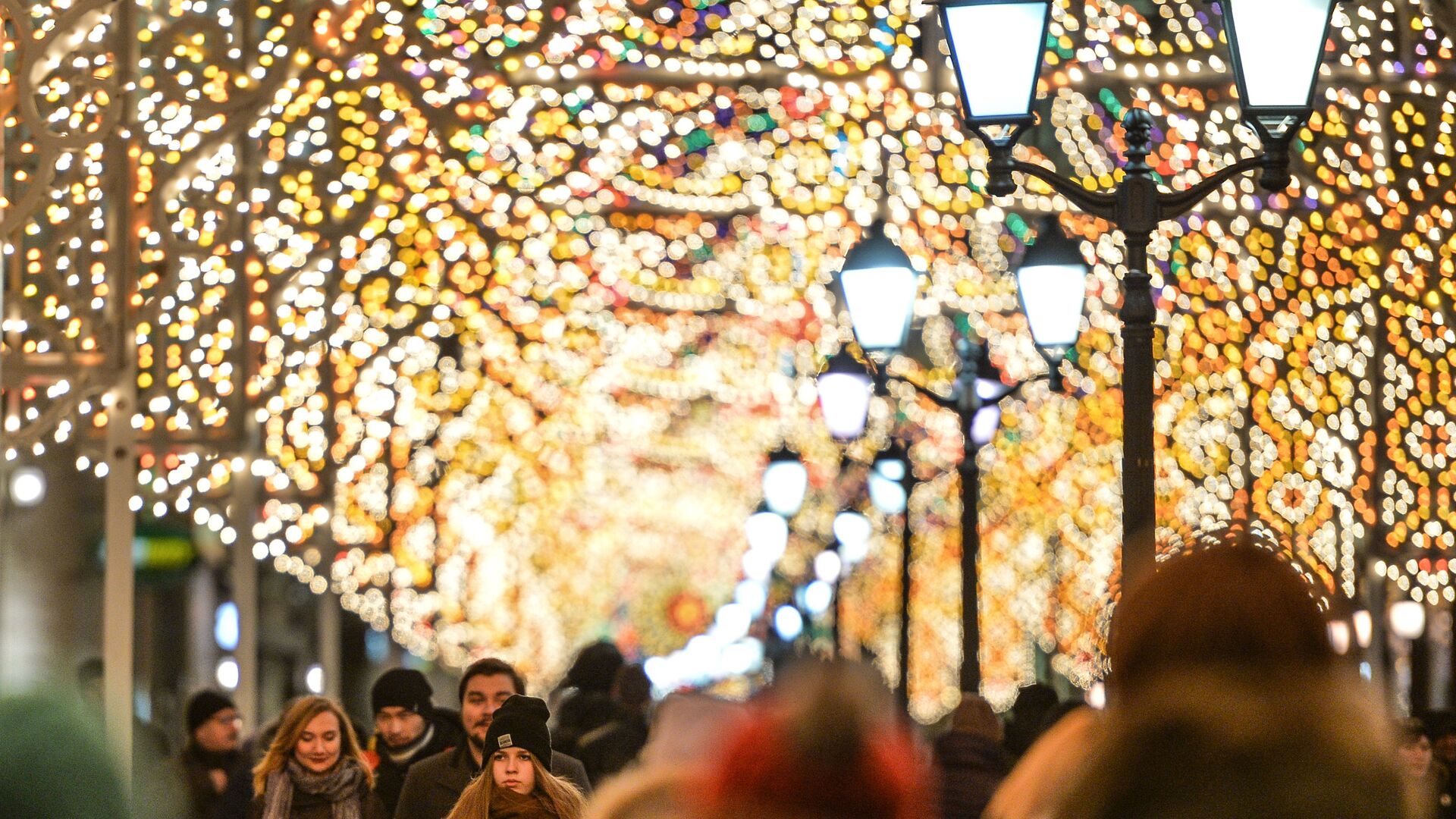https://sputnikglobe.com/20240327/overexposure-to-nighttime-light-has-risks-what-are-they-1117577011.html
Overexposure to Nighttime Light Has Risks: What Are They?
Overexposure to Nighttime Light Has Risks: What Are They?
Sputnik International
Approximately 80 percent of the world's population lives in areas with intense luminosity by artificial nighttime light sources. This phenomenon has raised concerns about potential adverse effects on human brain health and vigor.
2024-03-27T13:02+0000
2024-03-27T13:02+0000
2024-03-27T13:02+0000
beyond politics
china
hangzhou
ningbo
newsfeed
https://cdn1.img.sputnikglobe.com/img/103253/69/1032536934_0:143:3137:1907_1920x0_80_0_0_a468e69a179cc3d0c8daeea47a93e703.jpg
Prolonged exposure of an individual to bright, artificial light at night could heighten their predisposition to stroke, according to research published in Stroke.A group of researchers from the Zhejiang University School of Medicine in China has asserted that the overuse of bright outdoor lights at night affects roughly 80 percent of the world's population, particularly those living in areas affected by light pollution. This development has sparked significant environmental and health concerns despite their primary goal of enhancing visibility and ensuring human safety and security.The research surveyed 28,302 participants living in Ningbo, China, between 2015 and 2018. The scientists assessed air pollution and outdoor nighttime lighting using satellite imagery mapping light pollution in the city.Over six years (from 2015 to 2021), the researchers analyzed data from participants and found that:Artificial light sources comprise fluorescent, incandescent, and light-emitting diode (LED) products. They possess varying radiant power in various wavelength bands. For instance, LEDs emit the most light in the blue spectrum (short wavelength), while incandescent lamps produce light mostly in the red light band (long wavelength). Prolonged exposure to these light sources at night suppresses melatonin production (a hormone that helps to control how and when you sleep) and disrupts sleep patterns, leading to adverse health conditions, the study reveals.“We need to develop more effective policies and prevention strategies to reduce the burden of disease from environmental factors such as light as well as air pollution, particularly for people living in the most densely populated, polluted areas around the world,” Dr. Wang said.The study's limitations include the absence of data on indoor lighting and shading measures, potential underestimation of outdoor lighting effects on cerebrovascular disease due to satellite constraints, and a restricted scope to one city in China, limiting the broader applicability of the findings. Larger prospective studies are necessary to confirm these results.
https://sputnikglobe.com/20240227/new-research-finds-connection-between-air-pollution-and-cancers-1117013116.html
china
hangzhou
ningbo
Sputnik International
feedback@sputniknews.com
+74956456601
MIA „Rossiya Segodnya“
2024
Chimauchem Nwosu
https://cdn1.img.sputnikglobe.com/img/07e7/09/01/1113046371_0:99:1536:1635_100x100_80_0_0_9c5c627283eca931c39fe4852bbb301c.jpg
Chimauchem Nwosu
https://cdn1.img.sputnikglobe.com/img/07e7/09/01/1113046371_0:99:1536:1635_100x100_80_0_0_9c5c627283eca931c39fe4852bbb301c.jpg
News
en_EN
Sputnik International
feedback@sputniknews.com
+74956456601
MIA „Rossiya Segodnya“
Sputnik International
feedback@sputniknews.com
+74956456601
MIA „Rossiya Segodnya“
Chimauchem Nwosu
https://cdn1.img.sputnikglobe.com/img/07e7/09/01/1113046371_0:99:1536:1635_100x100_80_0_0_9c5c627283eca931c39fe4852bbb301c.jpg
artificial light, nighttime light, artificial light sources, stroke, light pollution, cerebrovascular disease, particulate matter, air pollution.
artificial light, nighttime light, artificial light sources, stroke, light pollution, cerebrovascular disease, particulate matter, air pollution.
Overexposure to Nighttime Light Has Risks: What Are They?
Approximately 80 percent of the world's population lives in areas with intense luminosity by artificial nighttime light sources. This phenomenon has raised concerns about potential adverse effects on human brain health and vigor.
Prolonged exposure of an individual to bright, artificial light at night could heighten their predisposition to
stroke, according to
research published in
Stroke.A group of researchers from the Zhejiang University School of Medicine in China has asserted that the overuse of bright outdoor lights at night affects roughly 80 percent of the world's population, particularly those living in areas affected by light pollution.
This development has sparked significant environmental and health concerns despite their primary goal of enhancing visibility and ensuring human safety and security.
"Our study suggests that higher levels of exposure to outdoor artificial light at night may be a risk factor for cerebrovascular disease…Therefore, we advise people, especially those living in urban areas, to consider reducing that exposure to protect themselves from its potential harmful impact," said Dr. Jianbing Wang, co-author, and researcher at the Departments of Public Health and Endocrinology at the Children's Hospital, Zhejiang University School of Medicine and the National Clinical Research Center for Children's Health in Hangzhou, China, in a news release.
The research surveyed 28,302 participants living in Ningbo, China, between 2015 and 2018. The scientists assessed
air pollution and outdoor nighttime lighting using satellite imagery mapping light pollution in the city.
Over six years (from 2015 to 2021), the researchers analyzed data from participants and found that:
1,278 people developed cerebrovascular disease, including 777 ischemic strokes and 133 hemorrhagic strokes.
Those with high exposure to outdoor light at night had a 43 percent higher risk of cerebrovascular disease than those with low exposure.
High levels of particulate matter 2.5 (from various sources like fuel combustion) were associated with a 41 percent increased risk of cerebrovascular disease.
High exposure to particulate matter 10 (from dust and smoke) correlated with a 50 percent higher risk of cerebrovascular disease.
High nitrogen oxide exposure (from vehicles, power plants, etc.) was linked to a 31 percent higher risk of cerebrovascular disease.

27 February 2024, 17:37 GMT
Artificial light sources comprise fluorescent, incandescent, and light-emitting diode (LED) products. They possess varying radiant power in various wavelength bands. For instance, LEDs emit the most light in the blue spectrum (short wavelength), while incandescent lamps produce light mostly in the red light band (long wavelength). Prolonged exposure to these light sources at night suppresses
melatonin production (a hormone that helps to control how and when you sleep) and disrupts sleep patterns, leading to adverse health conditions, the study reveals.
“We need to develop more effective policies and prevention strategies to reduce the burden of disease from environmental factors such as light as well as air pollution, particularly for people living in the most densely populated, polluted areas around the world,” Dr. Wang said.
The study's limitations include the absence of data on indoor lighting and shading measures, potential underestimation of outdoor lighting effects on cerebrovascular disease due to satellite constraints, and a restricted scope to one city in China, limiting the broader applicability of the findings. Larger prospective studies are necessary to confirm these results.




